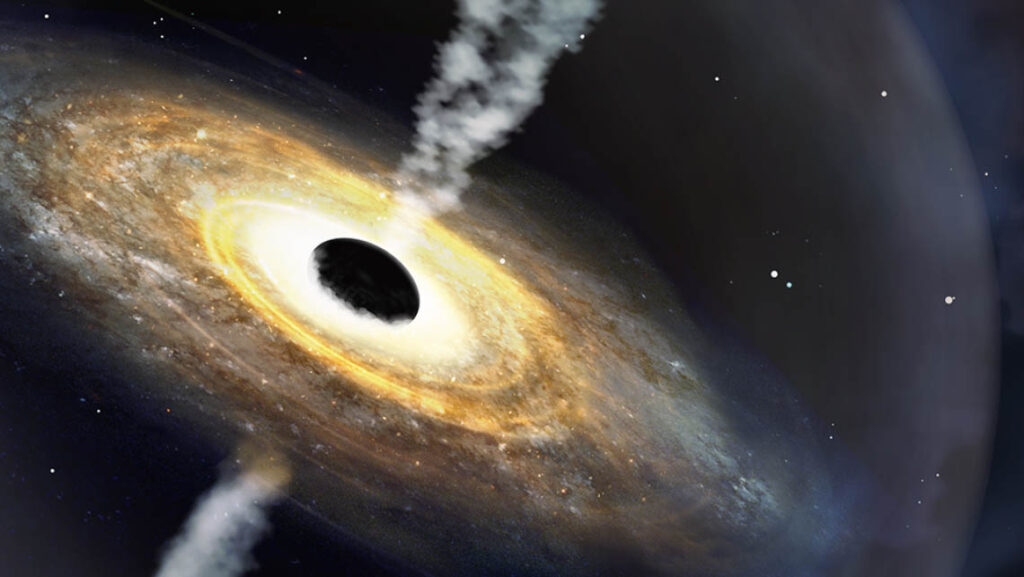
Aug 16, 2024. Santago, Chile
A quasar is a bright source of light created by gas swirling around a massive black hole in a galaxy. The quasar VIK J2348-3054 may be stopping star formation in nearby galaxies, according to a study by Trystan Lambert and colleagues of the Universidad Diego Portales in Santiago, Chile, .
This quasar is so far away that its light took 13 billion years to reach us, meaning we see it from when the universe was 770 million years old. Back then, the black hole was already 2 billion times the mass of the sun, suggesting it’s in a dense galaxy cluster.
Surprisingly, there are few star-forming galaxies near this quasar. The closest such galaxy is 16.8 million light-years away, much farther than expected. Lambert’s team searched a larger area than previous studies, finding a surprising lack of star-forming galaxies near the quasar.
Lambert thinks the quasar’s energy might heat up gas in nearby galaxies, preventing new stars from forming. However, Martin Rees from the University of Cambridge says this could be due to chance or the larger volume of space farther from the quasar.
Rees suggests more observations are needed to confirm this. If future studies find more star-forming galaxies far from the quasar but none close, it would support Lambert’s findings.
Our galaxy might have experienced a similar effect from a quasar in the past. The galaxy M87, with a massive black hole, might have had a quasar when the universe was younger, possibly affecting star formation in our galaxy.